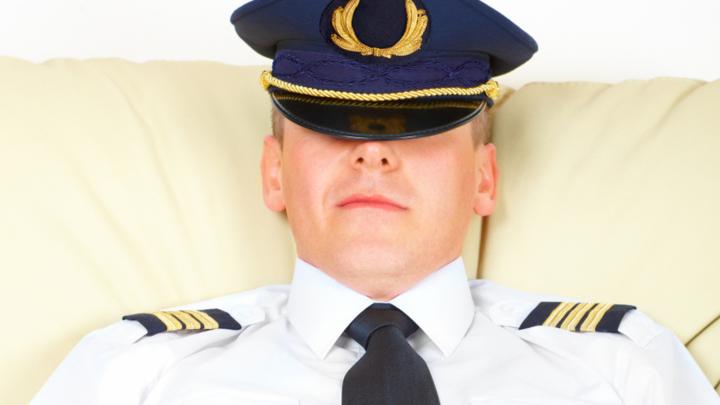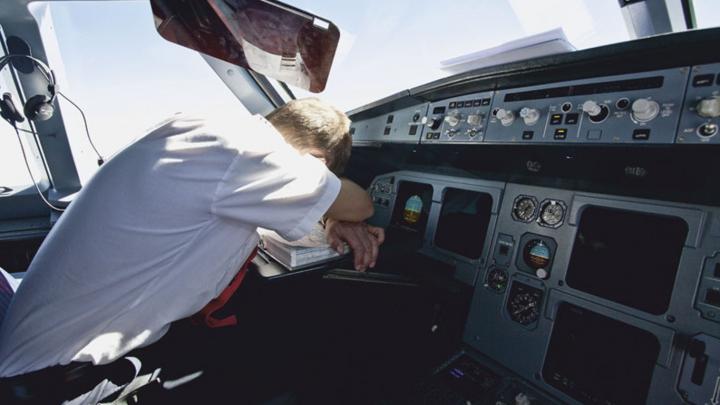Managing fatigue
Under Civil Aviation Order 48.1 Instrument 2019, pilots must not operate an aircraft if they:
- think they feel fatigued
- are likely to become fatigued over the course of the flight. This is to a degree that impairs their performance and results in an increased risk to flight safety.
Fatigue affects your ability to act. At the very least, tiredness affects your ability to handle stress and excess workload in the cockpit.
At worst, you may lose that decision-making ability altogether. Managing fatigue includes 4 basic elements:
- getting enough good quality sleep to build your resistance to fatigue
- being aware of the causes of fatigue, and the symptoms you may feel or see in others
- recognising when fatigue affects performance
- implementing strategies to manage fatigue.
The latest thinking in fatigue management means we don't have multiple night shifts in a row, and we have a matrix or a system for assessing the fatigue risk on every case to ensure that we're not pushing the margins in that direction.
Mark Stuart-Russell from Mount Isa Royal Flying Doctors Service.
Allow some flexibility
Having an itinerary worked out for your air safari is a must have. You also need to allow for changes to the itinerary. This includes making sure you have a few days extra in case of delays or emergencies.
When the Out-n-Back crew landed in Cairns mid-way through the safari, they were starting to show signs of fatigue. It was hot and everyone had been putting in long days.
Despite the pilots having worked within duty time limits, they realised a 2 night stay with one day off was not going to be enough. The pilots made the decision to extend their stay by another night to give themselves time for plenty of rest.
Fatigue risk management is just another form of safety management. In a single pilot situation, listen to what your body is telling you and let common sense prevail.
Unfortunately, we cannot train ourselves to need less sleep and we cannot store sleep.
Most of us have a pre-programmed amount of sleep we need to function, usually 7 to 8 hours a night.
You cannot expect to be at your peak level of performance when you've had a bad night's sleep.
This may have been a result of:
- too few hours between going to bed and getting up
- taking in the very early hours of the morning when you would normally be asleep
- having a restless night sleep.
You also need to consider your sleep over the past few days. Pilots can build up a sleep debt which also diminishes their effective performance in the cockpit.
Sleeping pilot
Diet and fitness
Start preparing for your flight early, paying attention to your diet as well.
When planning, look at the whole picture including your fitness to fly. Don't forget about your level of hydration and nutrition throughout the planned flying day.
It is easy to become dehydrated while flying and dehydration can exacerbate the effects of fatigue.
Pack plenty of water and snacks. Your stomach needs feeding and your brain needs it even more.
Always aim to eat a nutritious, light meal before you go flying, rather than a heavy meal laden with carbohydrates. Ensure you are not suffering from the effects of alcohol and be careful with taking medications. Know what's legal and understand their possible effects on fatigue.
Recognise the signs
In a single pilot environment, you don't have another crew member in the cockpit to cover any oversights you may be accumulating.
Make sure you recognise the signs of fatigue early. It's then up to you to take the appropriate measures to ensure it does not become detrimental to your performance.
An early indicator of fatigue is mood. Are you:
- feeling uncommunicative? perhaps a lot less positive about this impending flight than usual
- becoming frustrated with every little problem or struggling to make decisions?
If you feel tired, expect that your performance capabilities will start to degrade, followed by a decline in the accuracy of your performance.
Tiredness can increase when you are subject to demanding tasks or conditions, like excessive heat or turbulence, or complex procedures induced by bad weather.
Fatigue can impact a pilot's ability to react to emergencies and operate in an effective manner.
Even in the daytime, taking the opportunity for a short nap between flights can make all the difference to your level of fatigue. The longer the nap, the greater the recovery value.
Tired pilot resting in stationary aircraft
Sleep inertia and knowing your limits
Remember that sleep inertia can reduce the benefits of longer naps.
Sleep inertia is a period of sleepiness after you've just woken from a nap which can last up to 20 to 45 minutes. This is depending on individual differences.
It can take some time to return to full alertness after a long nap so consider setting your alarm for waking.
Try to avoid doing any work that involves safety until you are alert. A nap should allow at least 20 minutes sleep and be no longer than 45 minutes.
CAO 48.1 sets out clear limits on flight and duty times for flight crew members conducting various types of commercial operations. There are no specific limits for private flying other than the requirement not to fly if too fatigued or likely to become so. Private pilots should stick to the basic limits found in CAO 48.1 Appendix 1.
CAAP 48-1 offers guidance on the critical issue of assessing yourself for your level of fatigue, and includes a decision aid:
It's not a go or no-go tool but it does help in determining the level of risk and whether making changes to your plan.



